This groundbreaking shmup was pushing PC hardware to the limit back in 1989
Cinematic rail shooter Knight Arms came on two floppies bursting with showstopping shmupping.
Pasokon Retro is our regular look back at the early years of Japanese PC gaming, encompassing everything from specialist '80s computers to the happy days of Windows XP.
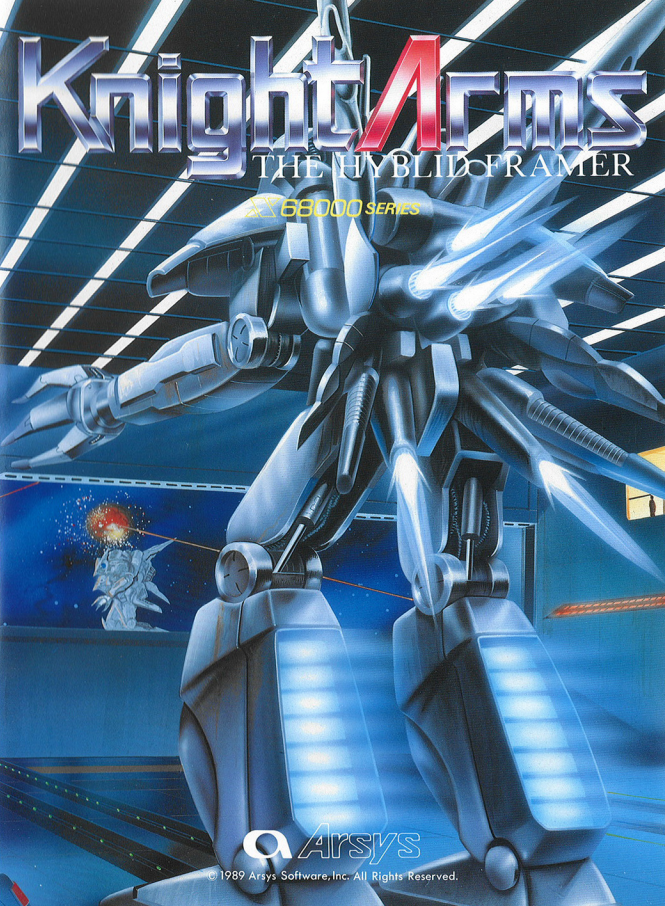
Knight Arms's first stage begins with a mech blasting through the starry infinite, the flecks of space dust that whiz by helping convey a palpable sense of speed and direction as mechanical enemies fly in from all sides. Literally—a dramatic "WATCH YOUR BACK" message appears in the centre of the screen during deceptive lulls in the action, an unsubtle reminder that it's time to unleash one of this Sharp X68000 game's most impressive features: the ability to turn around.
Turning around just wasn't a thing in rail shooters circa 1989. In the genre's formative games like Space Harrier, there was no way to pull a U-turn to fire at whatever's sneakily approaching from the rear, rotating your entire field of view in real-time when you about-face. So flexible is this system in Knight Arms it's actually possible to fly through an entire level—any level—backwards, although attempting to do so is not recommended.
Somehow that isn't even the best part. This game's got a flair for the dramatic from the first level, and blasting at things in the void of space wouldn't cut it. The curved horizon of a nameless moon scrolls into view below, the pock-marked surface rendered by this home computer game far more detailed than famous arcade shooter Space Harrier's chequered floors. I'm so busy staring at this impossible floor I get blown apart by the little turret-enemies on its surface.
The second time I'm excited and die because I'm waiting for this incredible feature to show up again, just in case my eyeballs were lying to me the first time. On my third run a metal gate appears in the distance, getting closer and closer until it fills the entire screen and starts to open. The mech turns to the side and shrinks towards the background, and suddenly the action has seamlessly shifted from one plane to another, as if Knight Arms had always been a side-scrolling shmup.
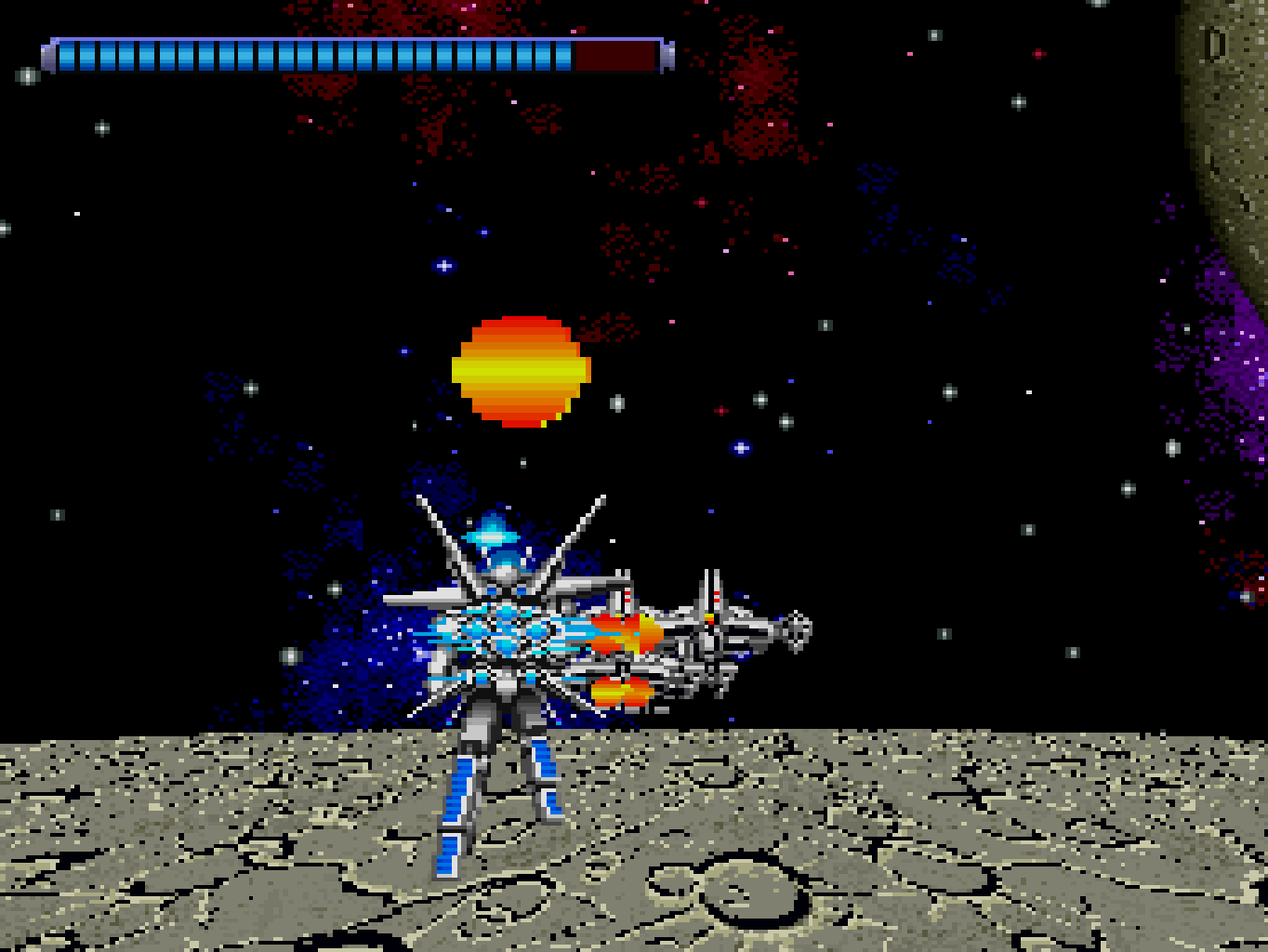
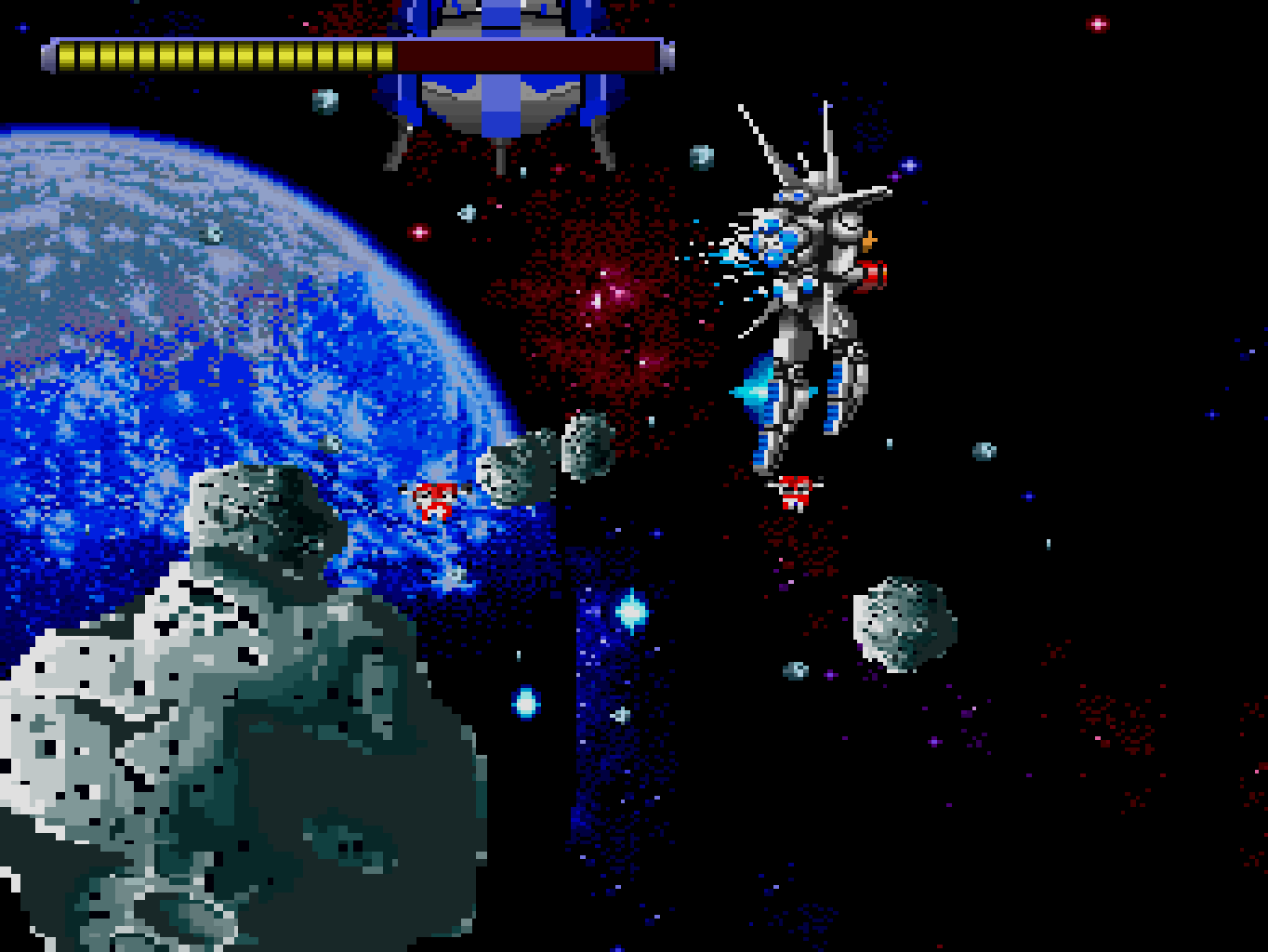

Games released on dusty old floppy disks just don't do that—not even mind-blowing tech demos set to catchy Eurobeat tunes programmed 30 years later to showboat on ancient hardware. But Knight Arms makes it look so damn easy, as if this is just something computer games from 1989 were supposed to do all the time. There's no loading screen to sit through. No real break in the action. Just two very different game types presented as one continuous whole.
The 2D segments effortlessly maintain this sense of wonder, eschewing the usual right-to-left autoscrolling. Instead, you set the pace, scrolling the screen as you move forward or backward. These side-scrolling segments also aren't quite as strictly 2D as they first appear either—your mech can not only turn around like before but also twist into and out of the screen at will, a handy move that allows you to take out enemies that are firing shots from otherwise inaccessible background layers or swirling into view from the front, their sprites (and bullets) growing or shrinking to simulate their current distance from the "camera".
Keep up to date with the most important stories and the best deals, as picked by the PC Gamer team.
This was hot stuff in 1989, and graphical showmanship on this scale inevitably comes with a hefty frame-based price tag, even on a home computer so powerful it was able to host pixel-perfect ports of contemporary arcade hits like Strider and Final Fight. The 3D segments often get a little choppy on the 10 MHz X68000 machines Knight Arms was developed for, and there's a tendency for the action to slow down a little during bullet-heavy 2D stages too. Running the game on later, more powerful, X68000 hardware speeds it up, but without code to properly reign in the faster processor. In the '80s and early '90s, trying to run games on later generations of PC hardware almost always caused more problems than it solved.
But considering the era Knight Arms was released in—a time when Sim City was brand new, the original Game Boy was making its debut, and Wolfenstein 3D was still a few years away—the fact that developer Arsys Software tried to create something like this at all, never mind came so close to pulling it off, is incredible.
It doesn't matter if Knight Arms isn't always as smooth and precise as more ordinary shmups, because the focus here isn't on achieving high scores or perfect death-free runs. In fact—heresy!—there's no scorekeeping at all, and you can continue from the beginning of the last stage reached as many times as you like. This game only wants to deliver an unforgettable experience; to make sure its players fall through the clouds of an alien sky until the land can just be seen below, the ground pulling closer and closer until the Knight Arm's low enough for mountains to loom in the distance and trees become a collision hazard. If it's not exciting for everyone watching, then it's not part of the game.
Despite the focus on visual spectacle, Knight Arms is still a savvily-designed rail shooter. Powerful weapons and life-saving shields come with harsh restrictions attached, encouraging intelligent play, positional awareness, and a hesitant trigger finger. Even the most minor of progress-blocking 2D bosses will go through multiple phases, the visible battle damage they sustain directly tied to specific weapons and shot types. Blow off a boss ship's front cannon and that cannon can no longer fire—although this will more than likely prompt them to activate something else instead, which in turn will force you to swiftly change tactics and perhaps even the direction you're attacking from if you want to live.


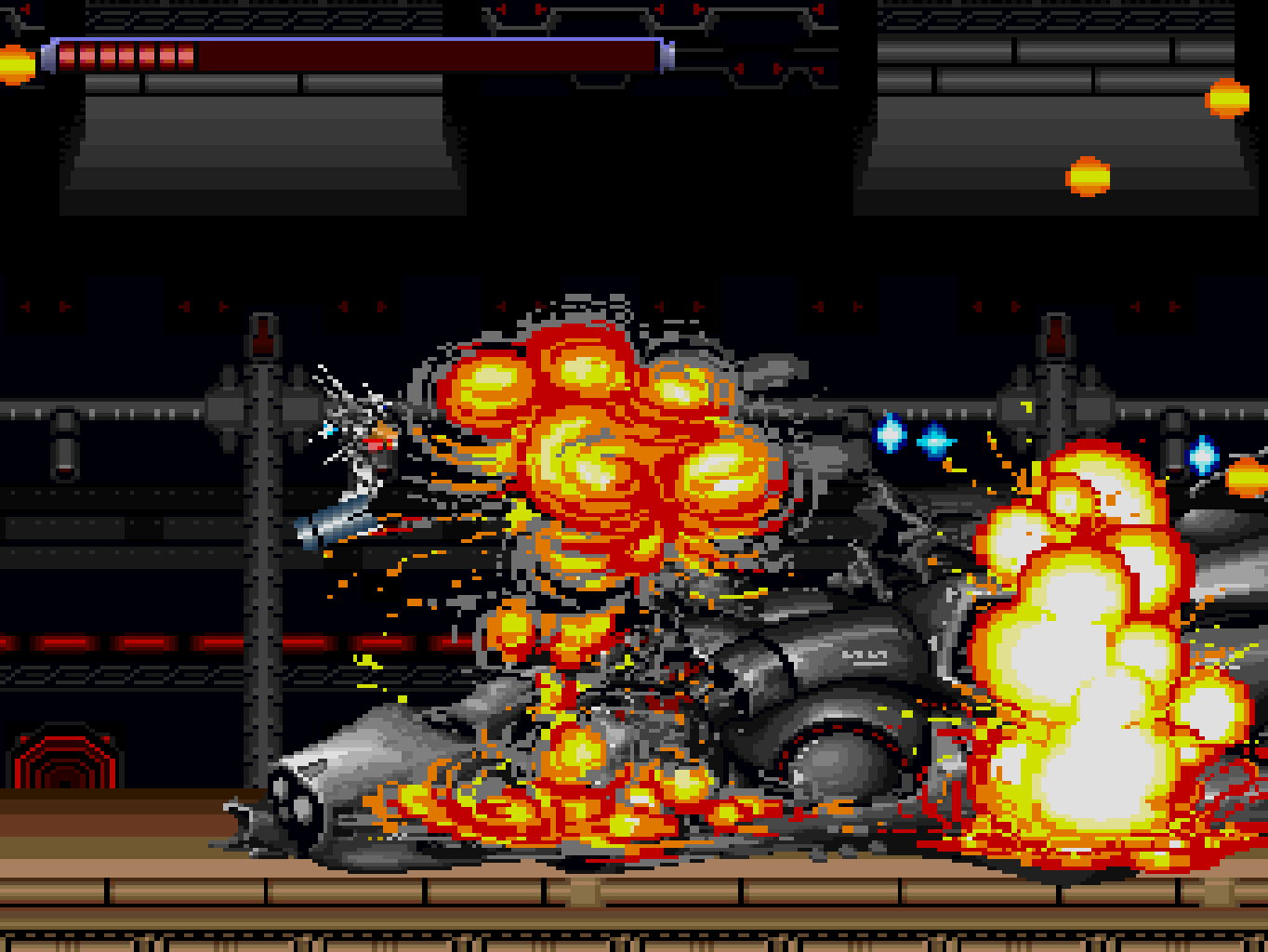
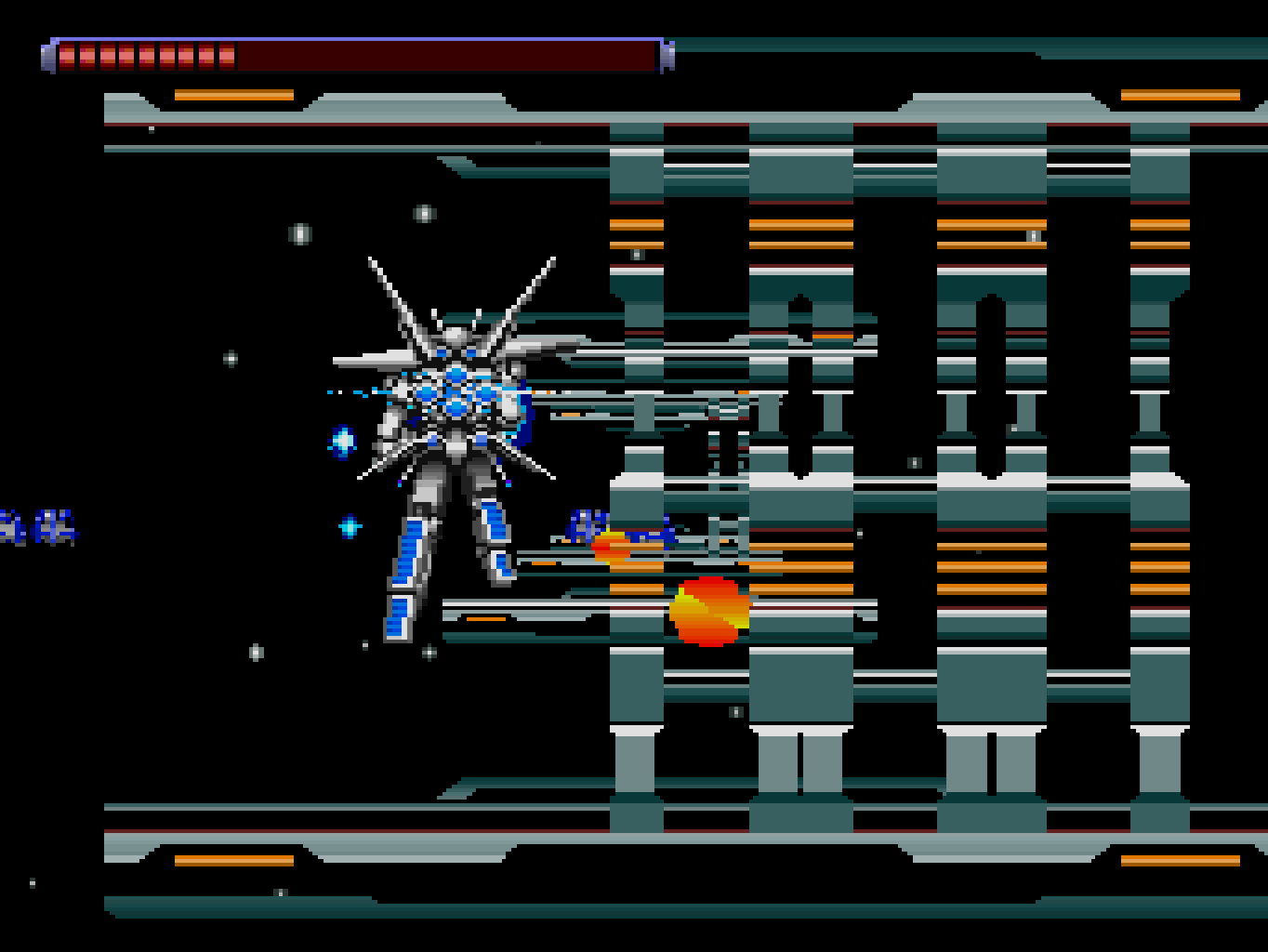
Knight Arms knows when to use those eye-catching graphical flourishes and when to hold back, too. The stunning stage transition effect is used sparingly; every level is presented in the way that suits the action best, even if that means the switch in perspective isn't split neatly down the middle or doesn't happen in some levels at all. This unpredictability helps prevent the jaw-dropping act of '80s programming from becoming stale, like some visual checkpoint marking the halfway point in a stage or a sure sign the next screen-filling boss is just around the corner.
The premise of an action game that shifts between the two most popular shooter forms of the era sounds like something the excitable kid at school with an uncle at Nintendo would've made up. But this game really did exist 34 years ago. This is the future made in the past: a game bought, sold, and forgotten before many other developers had even dared to try anything approaching Knight Arms' lofty goals.

Kerry insists they have a "time agnostic" approach to gaming, which is their excuse for having a very modern laptop filled with very old games and a lot of articles about games on floppy discs here on PC Gamer. When they're not insisting the '90s was 10 years ago, they're probably playing some sort of modern dungeon crawler, Baldur's Gate 3 (again), or writing about something weird and wonderful on their awkwardly named site, Kimimi the Game-Eating She-Monster.


